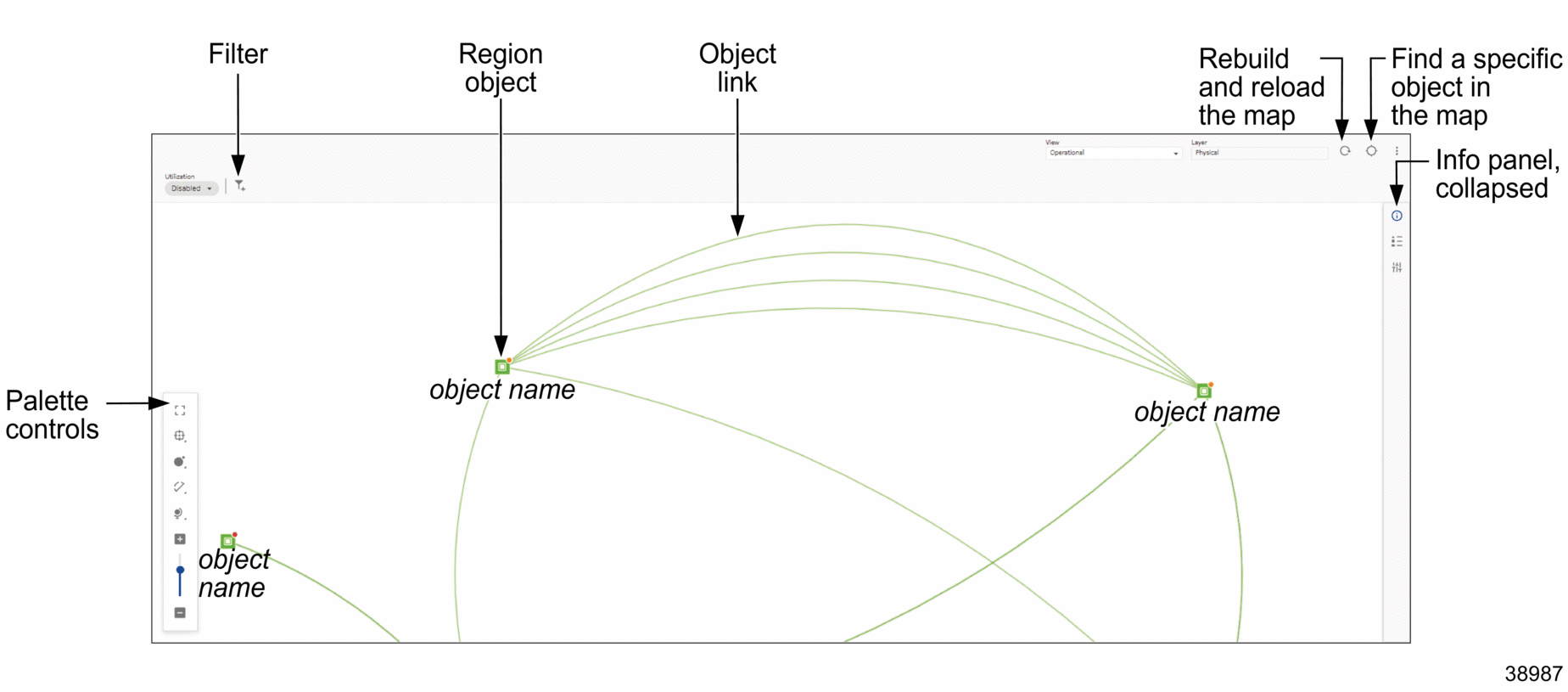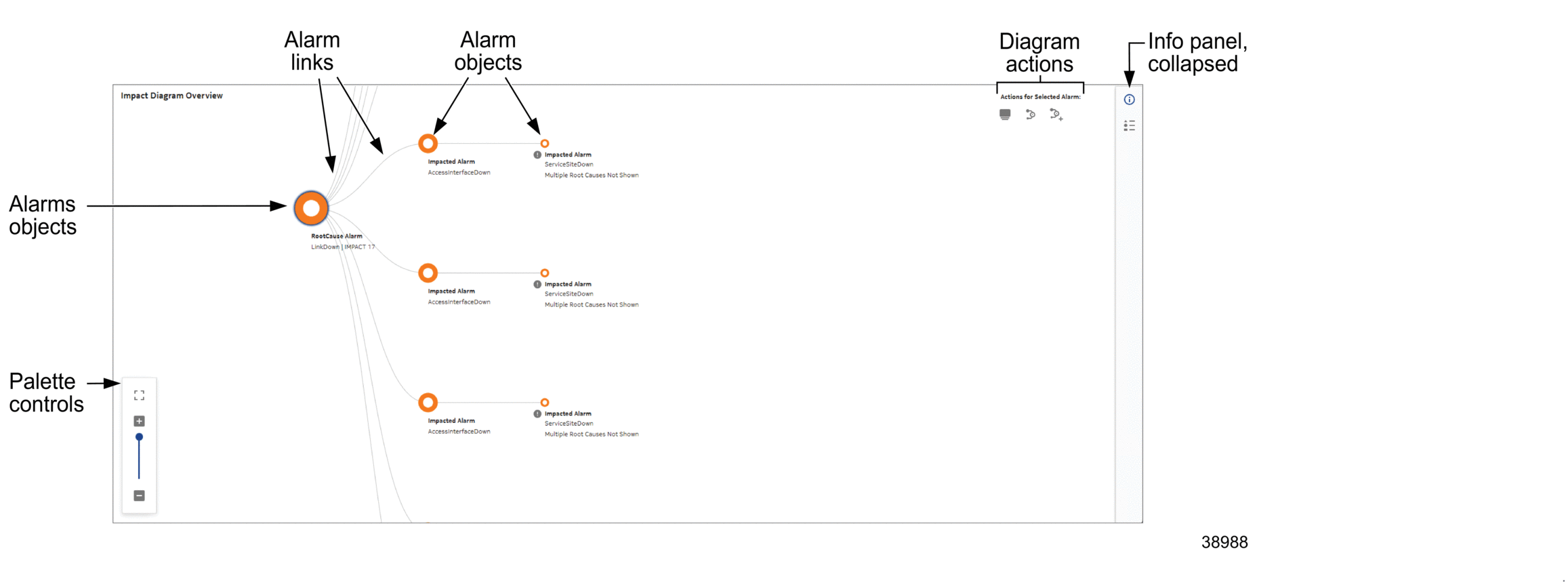How do I navigate a map or a diagram?
Interacting with a map or a diagram
Each map or diagram layout comprises various common components, including:
See Figure 1-7, Common map layout for a general map overview and Figure 1-8, Common diagram layout for a general diagram overview. You can click anywhere in the white space of a map or diagram and drag it to adjust the viewing area in any direction.
In addition, in maps, you can add filters, change the view, rebuild and reload the map, or find a specific object in the map.
In diagrams, the following actions are available for selected alarm objects:
Figure 1-7: Common map layout

Note: NEs and routers must be assigned to a region to appear on the map layout. If they are not assigned to a region, they can be manually assigned to one.
Figure 1-8: Common diagram layout

Palette controls
Palette controls are used to adjust the behavior and appearance of maps and diagrams. Available palette controls may vary by content.
Table 1-5: Palette controls
Objects
In maps, click and drag a region object to change its location, if desired. The existing link(s) between the object being moved and the object(s) staying in place remain intact.
Hovering over any region object in a map displays a partial summary of what is shown in the info panel for that selected object.
Right-clicking a region object displays options that include, for example, showing the object in the network element list or adding it to the watchlist. Why do some views open in new browser tabs? explains the expected browser tab behavior when selecting those options.
In diagrams, hovering over any alarm object displays a partial summary of what is shown in the info panel for that selected alarm.
Object links
In maps, an object link represents the physical link(s) between at least two objects. You can adjust the way links are displayed in maps and diagrams using palette controls; see Table 1-5, Palette controls.
In diagrams, links represent relationships between alarms. For example, as shown in Figure 1-8, Common diagram layout, a RootCause Alarm may be connected to multiple impacted alarm objects, indicating their relationship to each other.
In maps, hovering over a link may display a partial summary of what is shown in the info panel for that selected link.
Right-clicking an object link in a map may display options that include, for example, viewing it in Current Alarms or in the link list. Why do some views open in new browser tabs? explains the expected browser tab behavior when selecting those options.